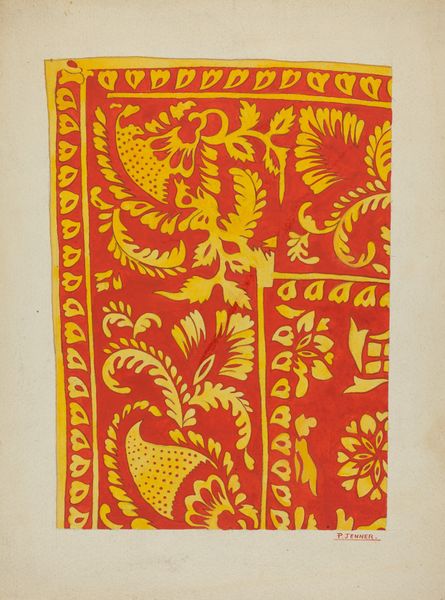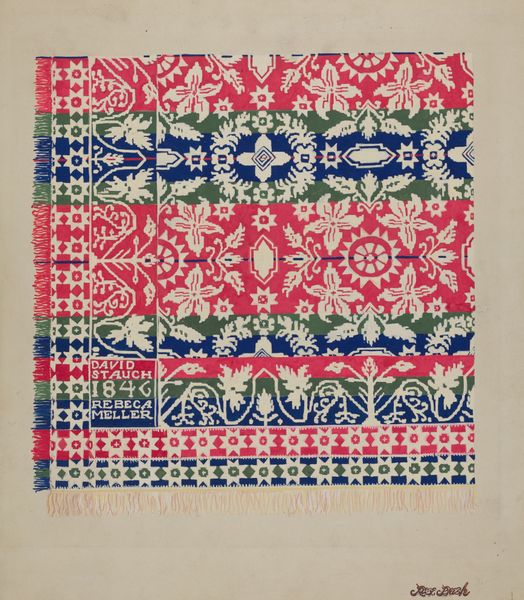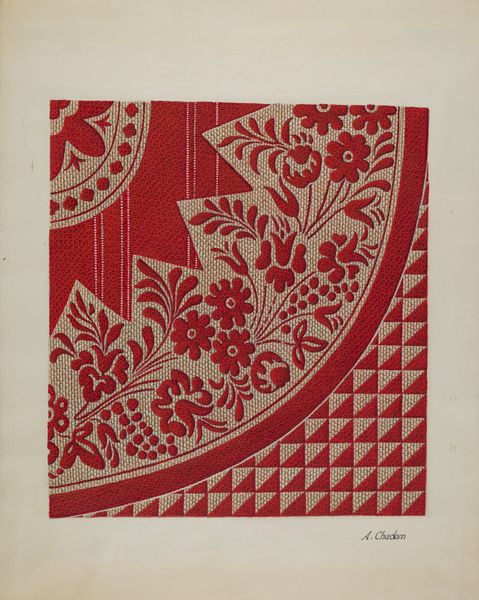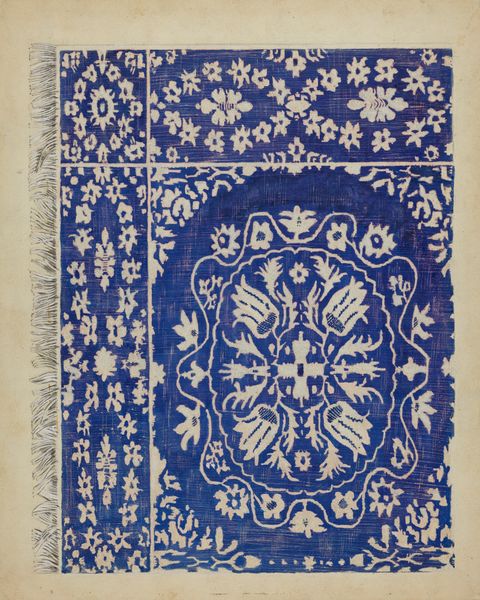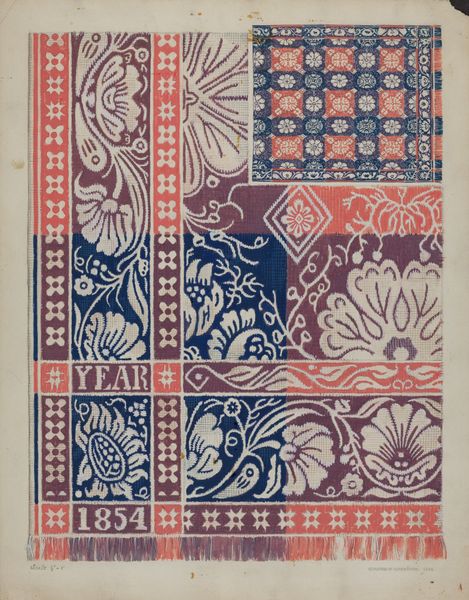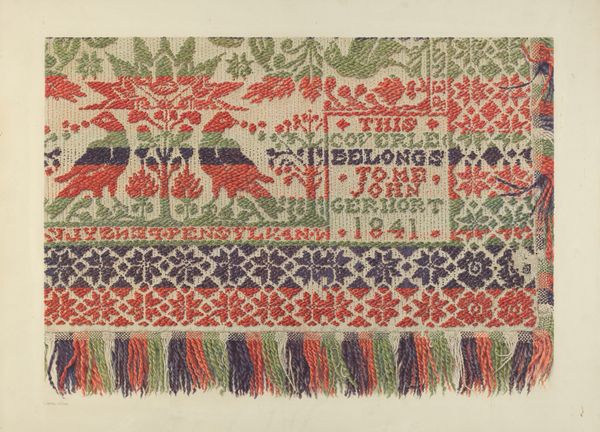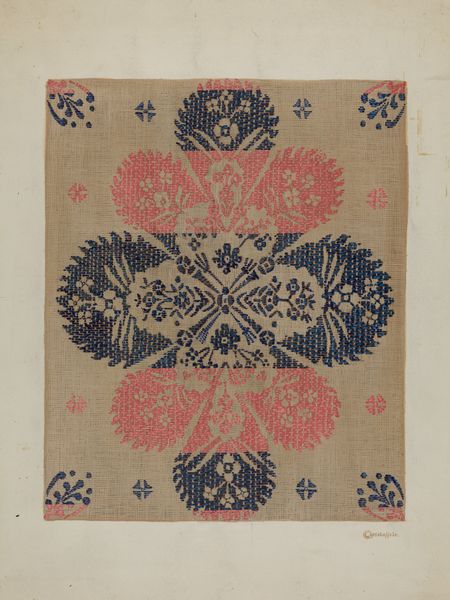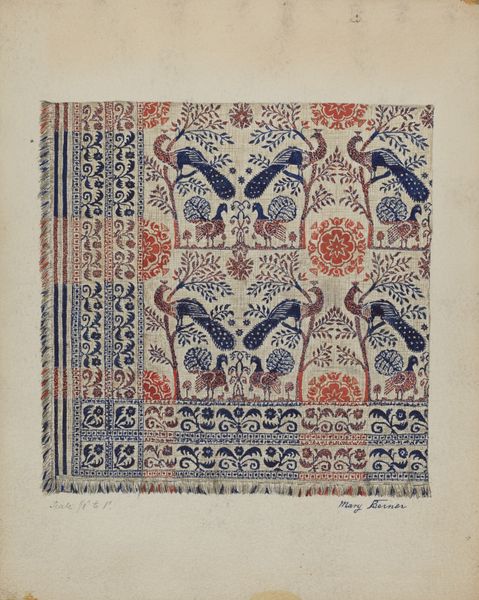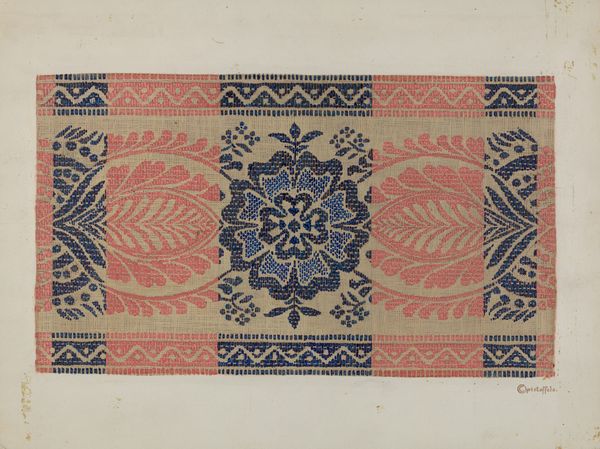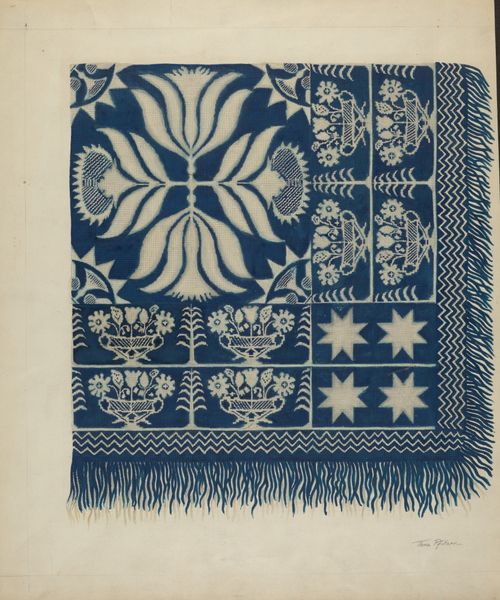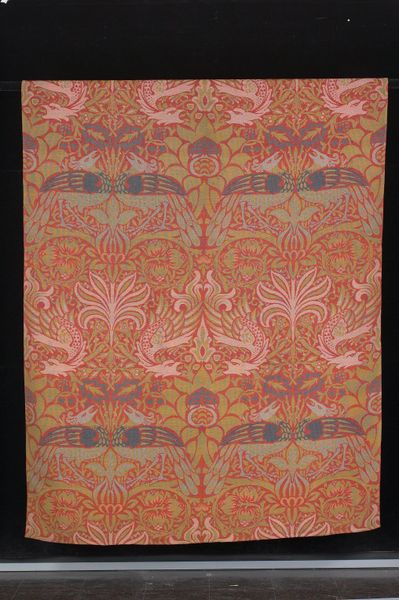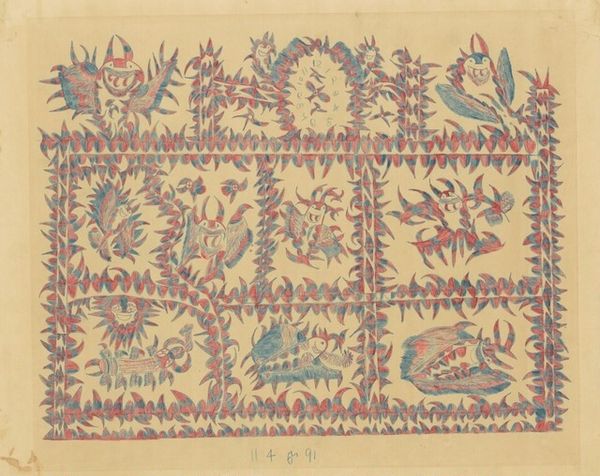
fibre-art, weaving, textile
#
fibre-art
#
weaving
#
textile
#
geometric pattern
#
abstract pattern
#
organic pattern
#
geometric
Dimensions: overall: 47.6 x 60.2 cm (18 3/4 x 23 11/16 in.) Original IAD Object: 94" long; 74" wide
Copyright: National Gallery of Art: CC0 1.0
Curator: Let’s have a look at this fascinating coverlet, dating back to around 1936 and created by Albert Eyth. It presents a rather stunning display of weaving and textile work. Editor: It's arresting, isn't it? The bold blocks of red, blue, and green with that golden floral motif—almost hypnotic. I wonder what kind of loomwork was involved in its production? Curator: The cultural context is essential here. Textiles like these, while functional, served a powerful role in conveying social standing and community identity. How the textile industry changed during Eyth’s career is equally of interest to its creation, and also its eventual adoption. Editor: Absolutely. And it raises questions about labor—who spun these threads, who dyed them, who wove the design? The materiality of the coverlet—its heft, the texture, what kind of fibers they are—it all speaks to a history of hands, labor, and resources. Was this something he commissioned, perhaps utilizing an industrialized pattern? Curator: The organic patterns mixed with those distinct geometric elements offer a visual bridge between nature and industry, the natural versus human constructed worlds, what was considered valuable at this time in both creative and capitalist senses. How do you read the symbolism here? Editor: To me, the repeated floral pattern seems to point toward nature's abundance, idealized labor, that repeated geometry reflecting some industrialized creation. It presents an idea of bucolic splendor against the constraints of geometric pattern. What do we know about the industry in 1930s when the coverlet was created? Was this piece designed for a domestic setting or for display, a public show? Curator: Most likely both. The domestic sphere was profoundly influenced by public aesthetic trends. Objects like this were deeply interwoven with ideas about status and aspiration. Think about how museums at the time categorized and elevated certain works above crafts, or how artists and crafters saw themselves relative to the established art world. Editor: So much embedded within its threads— literally. This isn't just a coverlet; it is an expression of socio-economic relations and material culture. Curator: Precisely. Eyth’s Coverlet invites us to consider the narratives and power structures inherent in something we might initially perceive as simple decoration. Editor: I’ll certainly never look at a woven pattern quite the same way. Considering all the elements of its materiality adds to the complexity, as it has given us today.
Comments
No comments
Be the first to comment and join the conversation on the ultimate creative platform.
